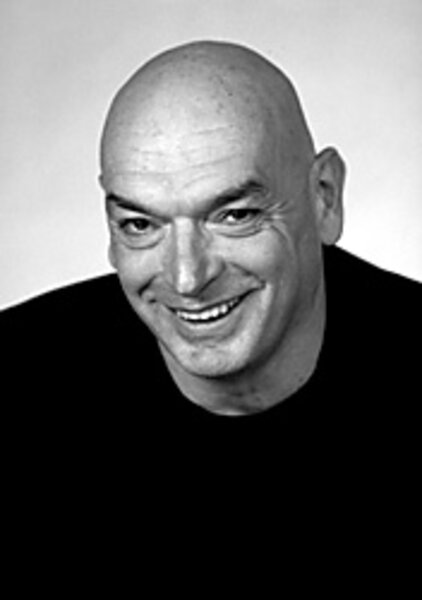Pritzker architecture prize goes to Jean Nouvel of France
Loading...
The 2008 Pritzker Architecture Prize, the most prestigious award given in architecture, goes to Jean Nouvel of France. This is only the second time an architect from France (Christian de Portzamparc in 1994 was the first) has received the honor in the prize's 30-year history.
Mr. Nouvel is saluted for a lifetime of achievement. In a phone interview, he says, "I have designed everything except an airport and a cathedral. I challenge myself to give each project a distinctive look."
His delight at receiving the high honor is palpable: "I am not noted for pursuing a particular style of architecture," he says. He likes to use innovative materials and approaches. "My work deals with what is happening now. I like to use the techniques and materials we are capable of today." He has designed museums, office buildings, cultural centers, housing – and more – in Italy, Japan, Spain, England, Switzerland, the Netherlands, Germany, South Korea, Mexico, Brazil, Iceland, Russia, Taiwan, Morocco, the United States, and elsewhere.
His pursuit of new ideas has led to creative experimentation; his buildings defy "modernist" or even "postmodernist" labels. Each project, to him, is a problem to be solved in a unique way: "I have always developed a different procedure for each commission," he says. "Much research is required." One critic observes that Nouvel's buildings are characterized by "their shimmering transparency, their enigmatic use of light and color, and their poetic use of modern technology."
Nouvel is particularly well known for his design of the Institut du Monde Arabe (IMA) in Paris, the Guthrie Theater in Minneapolis, the 75-story tower alongside the Museum of Modern Art in New York, and a forthcoming condominium complex in Century City, Los Angeles.
At the IMA, the southern facade is composed entirely of panels fitted with a pattern of mechanical oculi operated by photoelectric cells. They respond to changing light levels automatically, opening and closing the oculi. The intent is to give the building similar lighting to what it would have if located in the Middle East.
"Some describe me as a conceptual architect," Nouvel says, "one who deals more with words than with drawings. I believe that drawings often establish things too early, while words liberate, give you a chance to say something, to do something more profound."
Jean Nouvel was born in Fumel, southwestern France, in 1945.
"I must admit to sneaking out to the cinema," he says, and chuckles. "I wasn't officially introduced to the arts until I was 16." His father was a county school superintendent, and his mother taught high school English. "I wanted to be an artist," he says, "but they objected. We settled on architecture, for they thought being an artist was just too risky."
At 20, he went to Paris and won first prize in a competition to attend the Beaux Arts School. To earn money, he took a job working for architects Claude Parent and Paul Virilio. He'd been at the firm less than a year when they made him project manager for an 80-unit apartment complex. When he finished school, he opened his own office. It was a huge step for a man not yet 25. Many of his early commissions were steered to him by his former employers.
Jean Nouvel was on his way. In the 1980s, President François Mitterand chose Nouvel to build the IMA, composed of a museum, a library, temporary exhibit spaces, children's workshops, a documentation center, an auditorium, and a rooftop restaurant. In 1994, he created his current firm, Ateliers Jean Nouvel, with Michel Pelissie.
No article about Nouvel would be complete without discussing his "Tower Without Ends" ("Tour Sans Fins"), a quarter-mile-tall project intended to be built in Paris and be the tallest building in the world. It has yet to be realized. Granite was to be used in the lower floors, transitioning to aluminum, then to stainless steel and to glass, the tower becoming more ethereal as it soared upward. It was to rise from an excavation and disappear into the sky, hence a tower with no ends.
Nouvel says he likes to be continually challenged. "That is when the excitement comes, to constantly be searching for new ways to accomplish things, unusual colors, high-tech ideas, and a variety of shapes," he says. "That's why I found the narrow lot next door to the Museum of Modern Art in New York so challenging. It would be part of the museum with its galleries, yet it was shaped so its silhouette was like a needle."
The award will be presented June 2 by Thomas Pritzker, president of the Hyatt Foundation, at the Library of Congress in Washington, D.C. Nouvel will receive a bronze medallion and a grant of $100,000, followed by a formal banquet in his honor.







